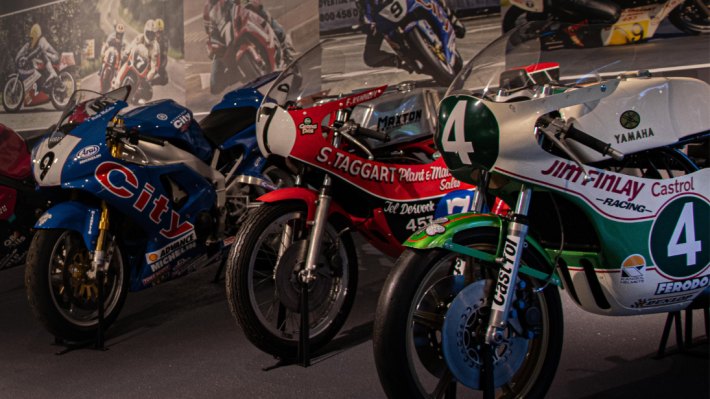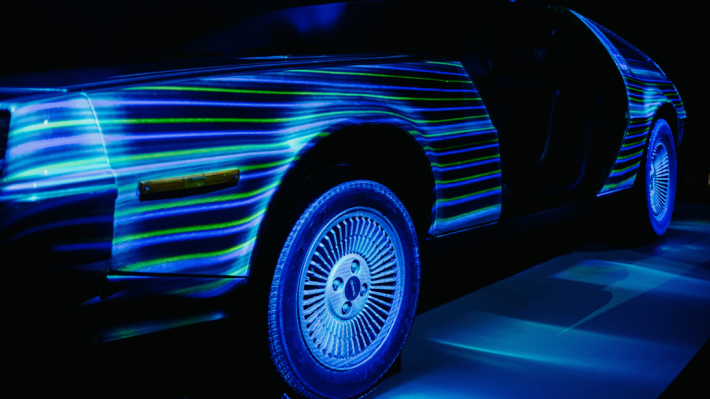
The Cultra Hill Climb Legacy
Where it all started
The first ever international motor race with teams from different countries was the 1900 Gordon Bennett Cup, organised by the Automobile Club of France. When a British driver won the Cup in 1902, the Automobile Club of Great Britain and Ireland gained the right to host the 1903 race.

© Royal Irish Automobile Club Archive
Supported by Irish Members of Parliament, “both orange and green”, the race was held in Ireland. To honour the host nation, British racing cars were painted green.
The Gordon Bennett Cup attracted huge crowds and to encourage overseas visitors to stay longer in Ireland, many activities were organised. These included a touring event from Dublin to Newcastle, plus speed trials and a hill climb at Ballybannon near Castlewellan. Motor racing had become fashionable in Ireland.
Royal North of Ireland Yacht Club
Two years later, the Royal North of Ireland Yacht Club (RNIYC) decided to hold a motor meet and hill climb to mark the beginning of the 1905 sailing season. Although there were only around 200 cars in all of Ireland at that time, at least 40 were owned by members of the club.

© Royal Irish Automobile Club Archive
Many were successful captains of industry. For example, Sir Otto Jaffé was twice Lord Mayor of Belfast, and the largest linen exporter in Ireland. Another club member, R. J. Kennedy of Cultra Manor, owned the private roads nearby used for the hill climb. The cars, some worth over £1,000, were displayed along the road in front of the clubhouse. Cars taking part in the hill climb carried a timekeeper (with a stopwatch) in the front seat and the owner of the car, not their chauffeur, had to drive. It was a very fashionable society event and attracted large crowds. With Cultra railway station beside the hill climb finish line and the clubhouse within easy walking distance, many came by train (and they still can today).
It became one of the biggest motoring events in Ireland, with 100 cars reported to have attended one year. A Dublin paper reported "...we have rarely seen a higher average of quality than the cars represented in the Royal North of Ireland Yacht Club.”
By 1911 the event was losing its appeal to club members. One attendee suggested they should look into aeroplanes. In 1912, instead of a hill climb, the RNIYC organised a motor paper chase starting at Belfast City Hall. Although they continued to organise driving events for their members, there were no more hill climbs at Cultra.

© Royal Irish Automobile Club Archive
Harry Ferguson
In 1913 the Motor Traders Association Belfast Branch, led by Harry Ferguson, organised the first hill climb at Craigantlet on the outskirts of Belfast. The Irish home rule crisis and First World War put an end to further organised motorsport.

HOYFM.OYFM.L1976.3
It returned in 1922 when the local motorsport community put pressure on the new Northern Ireland parliament to allow racing on public roads. Harry Ferguson was responsible for finding and getting approval for the first road racing course, at Clady between North Belfast and Antrim. In June 1922 the Motor Vehicle Races Act in Northern Ireland was enacted, and on the 14th of October the first Ulster Motorcycle Grand Prix took place.
Cultra Manor
In 2000 the Thoroughbred Sports Car Club Northern Ireland decided to revive the Cultra motor meets and hill climbs. The roads used between 1905 to 1911 were not suitable for a modern hill climb but, working with National Museums NI, a new course was established within the beautiful grounds of the Ulster Folk Museum. Everything from vintage to single seater racing cars compete in the hill climb, and cars and other vehicles sit proudly on display in front of the Manor.
I like to think that R J Kennedy of Cultra Manor would have approved.
Paul Robinson, passionate about Northern Ireland's Motorsport History, is a member of the Society of Automotive Historians in Britain.
You Might Also Like
Driven
Discover the men and women who pushed the boundaries in their field. Whether it was racing, engineering or endurance, the people featured in this gallery were driven to succeed.
Road Racing Celebrated as Ulster Transport Museum's Driven Gallery Reopens
Seven motorbikes once owned by local road racing legends make up a new display as part of the Driven exhibition.
Museum of Innovation
The Museum of Innovation highlights the local pioneers of science and engineering, who have pushed the boundaries of invention.


